

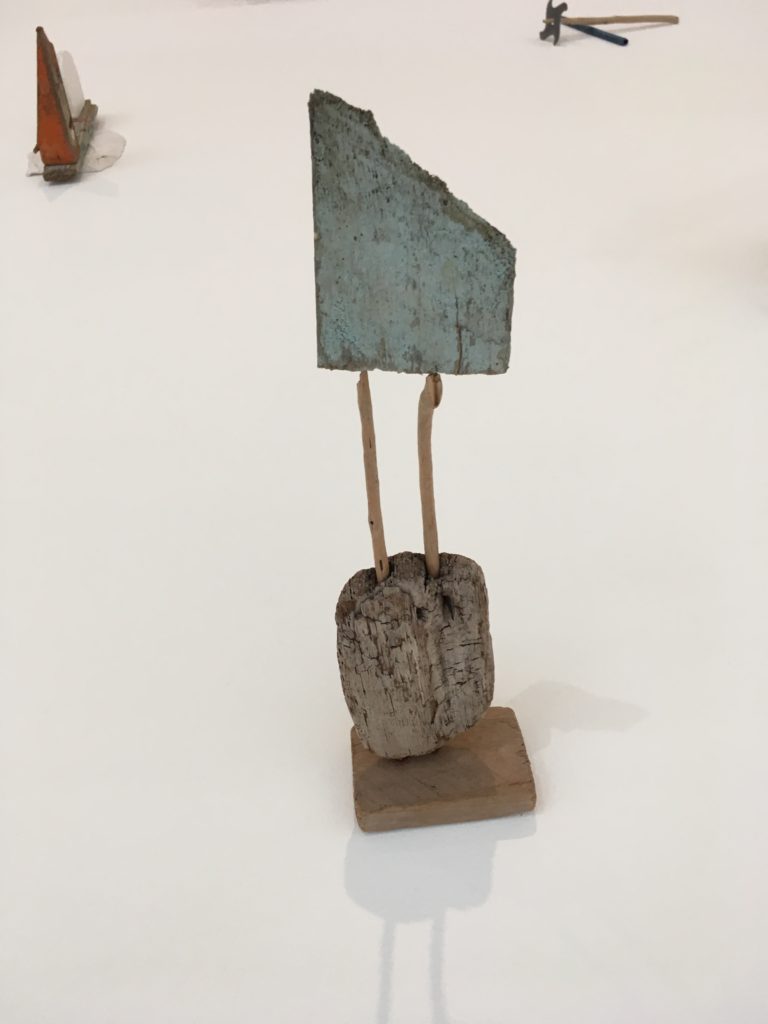
The Henry Art Gallery’s exhibition of Chilean artist Cecilia Vicuña gives new life to found materials. On two walls and a large floor area, Vicuña placed over 100 Precarios, very small sculptures created from detritus gathered on beaches since the 1960s. Precarios refers to the delicacy of the tiny sculptures, but they also speak metaphorically of fragile indigenous recovery from colonial erasure, and the planet’s current threatened condition.
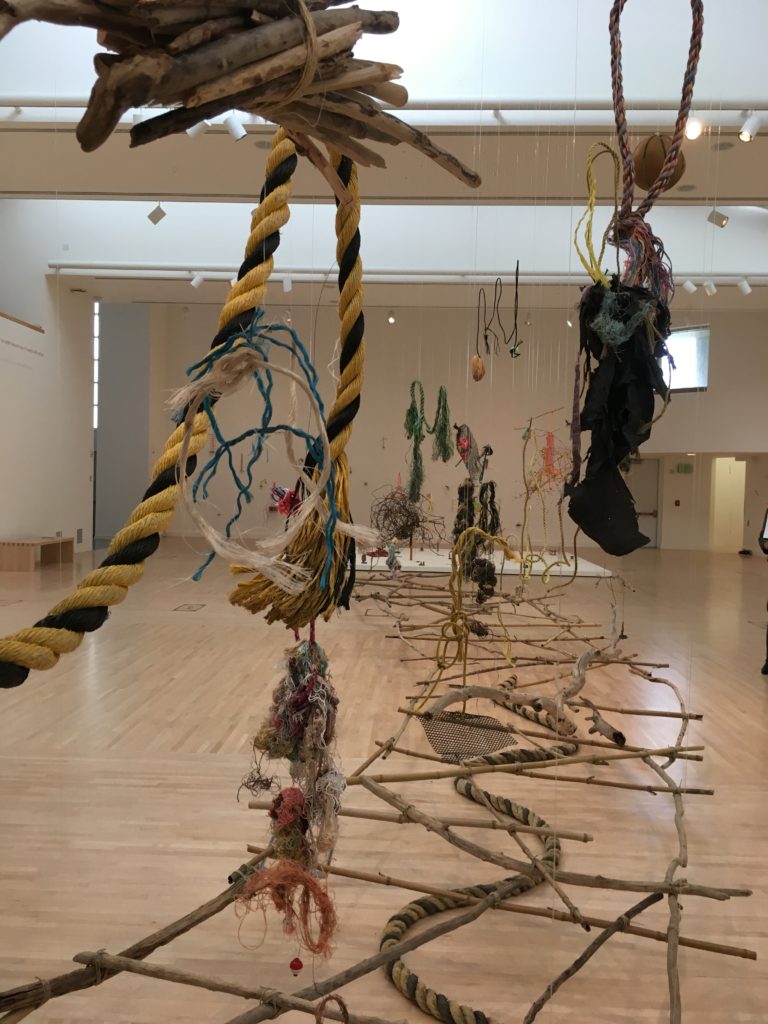
As with the idea of Precarios, Vicuña’s art moves from micro to macro in scale and concept. The Balsa Snake Raft to Escape the Flood wends through the center of the gallery with a wild range of materials: bamboo, willows, twigs, fishing line, beads, rope, net, styrofoam, plastic, feathers. As we look at this long shape, the snake seems to explode into the air, its fragile materials unable to support us.
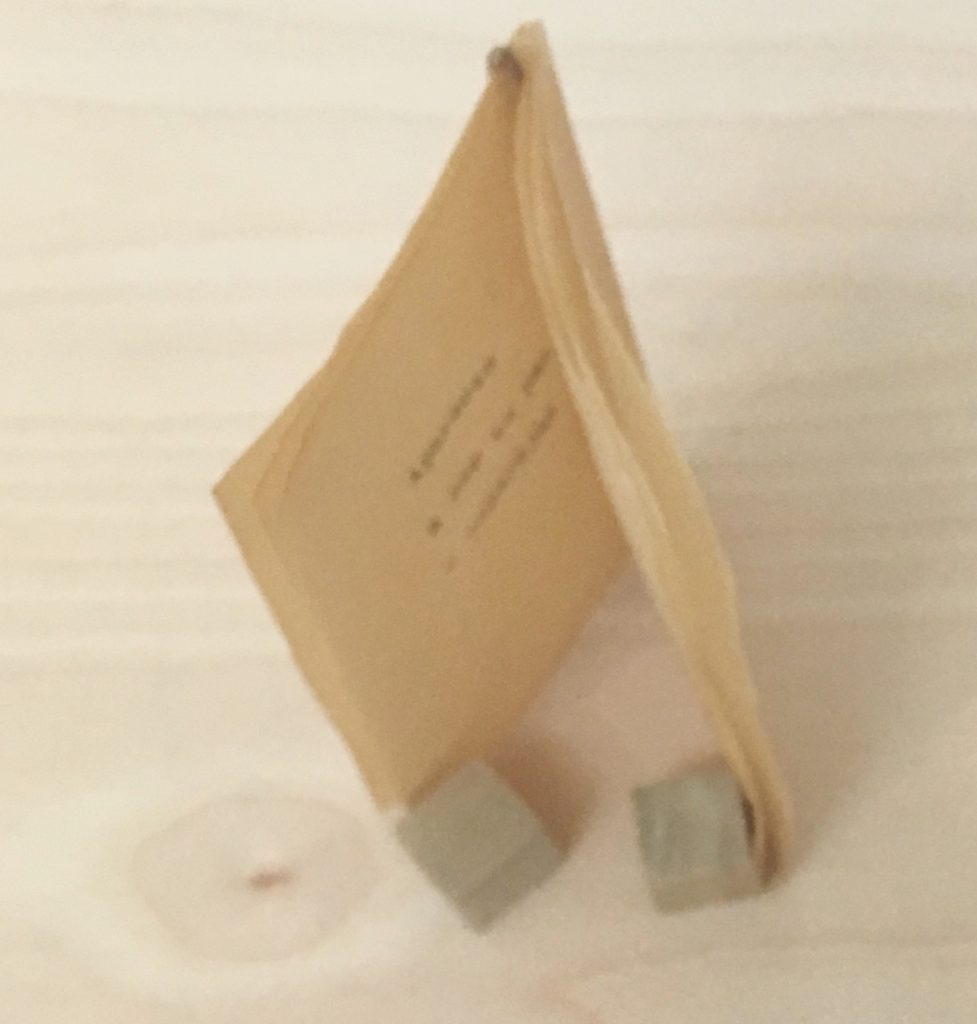
Vicuña weaves words as well as objects. High at the top of two facing walls Vicuña placed a poem in one single long line. Underneath is a case filled with her poetry books and “Book Objects,” tiny sculptures with brief handwritten texts that offer enticing tidbits of ideas. This tiny book is called “Des a par e cer (Disappear) 1980s. It says “To appear is to be in pairs/ To Disappear is to unpair.” Well you can think about that.
Caracol Azul (Blue Snail), a large bail of unspun blue wool, partially unrolled on the floor, creates a giant image of a snail trail. From an indigenous perspective unspun wool “stands for cosmic gas and interstellar dust that gave birth to galaxies and water.” And the snail trail connects to the beginning of writing.
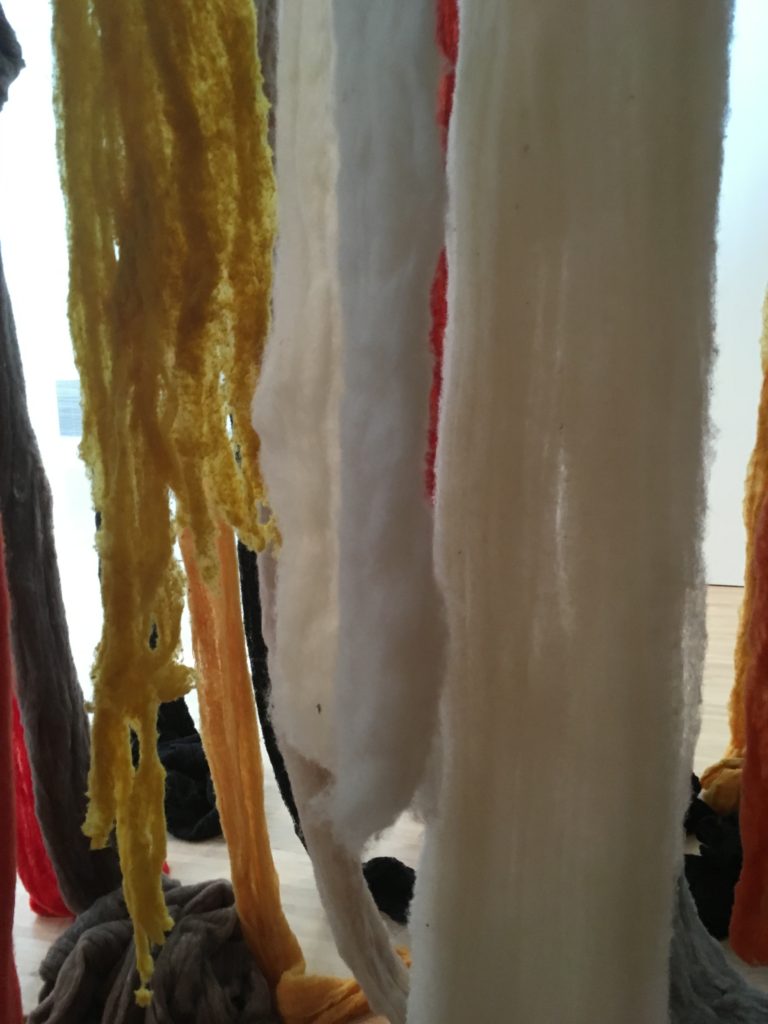
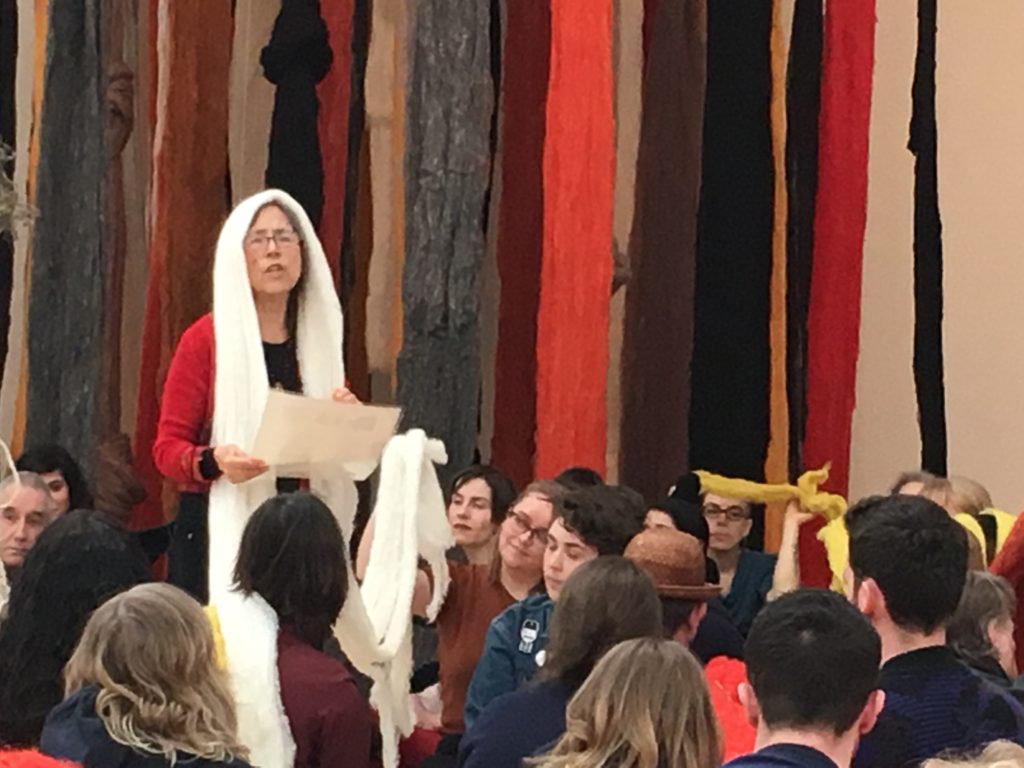
At the far end of the gallery, the installation Burnt Quipu made of orange, brown and yellow lengths of wool that hang from the ceiling, creates a dense forest like environment that we are invited to walk through. It commemorates the forest fires of last summer.
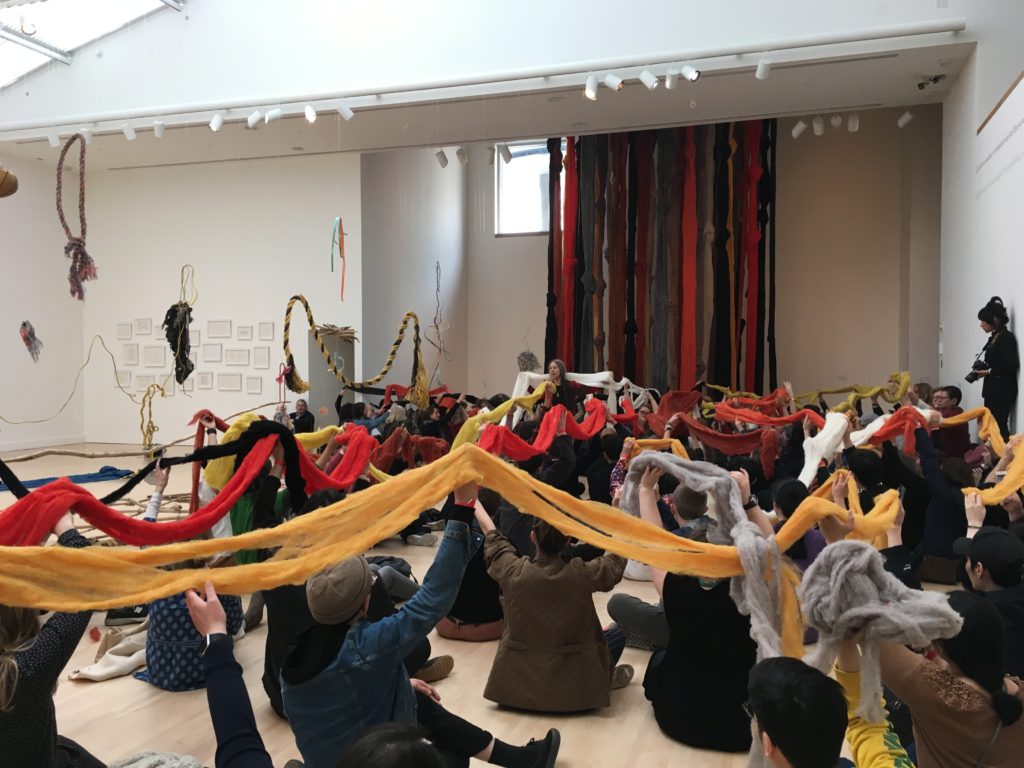
Vicuña incorporated several long Quipu in a performance at the museum: we passed them from one person to the next creating a connection and community among the almost 100 people there, as she sang a poem wearing a white Quipu.
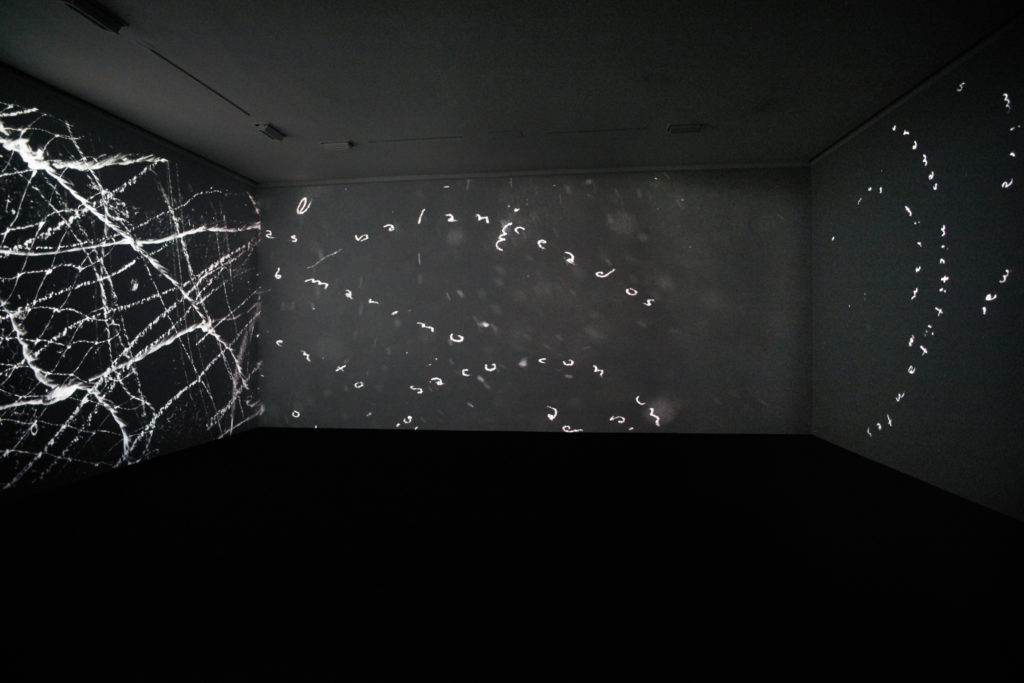
Vicuña references climate change in several media. Her long raft suggests the difficulty of surviving sea level rise. A three channel digital video La Noche de las Especies, (Night of the Species) animates her drawings of microorganisms and immerses us in both their wonder and their extinctions. Finally, there are six short films in the auditorium. In one of them , she collects seeds while she sings “Semiya,”a seed song (which you can also hear in a Precarios installed in a corner of the gallery) .
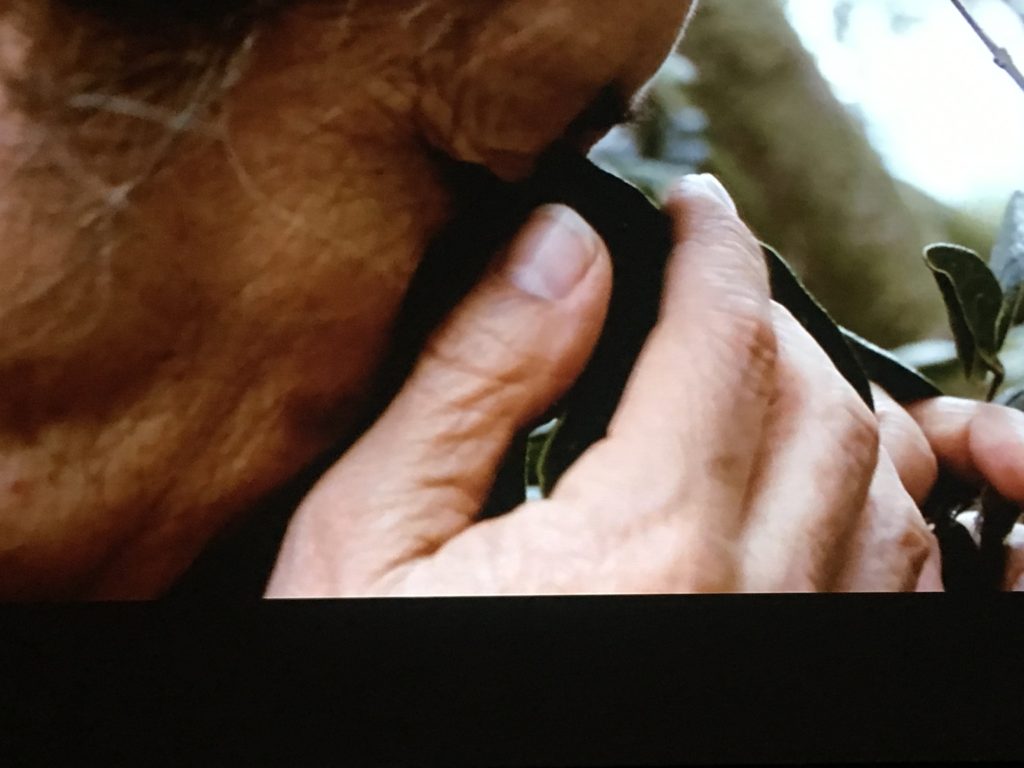
As I moved through the exhibition, I felt the poetry both visual and textual, permeating me. The changing scales from large to tiny, the resurrection of the most humble materials into extraordinarily fascinating sculptures, the singing, the films, weave an experience that is more than just viewing. Walking through the gallery is a walk through a forest, but this forest is constructed from words and found materials only some of which are natural ( as the forests and nature in general today is so often littered with plastic).
It speaks of the past and the present, but leaves a question mark hanging over the future.